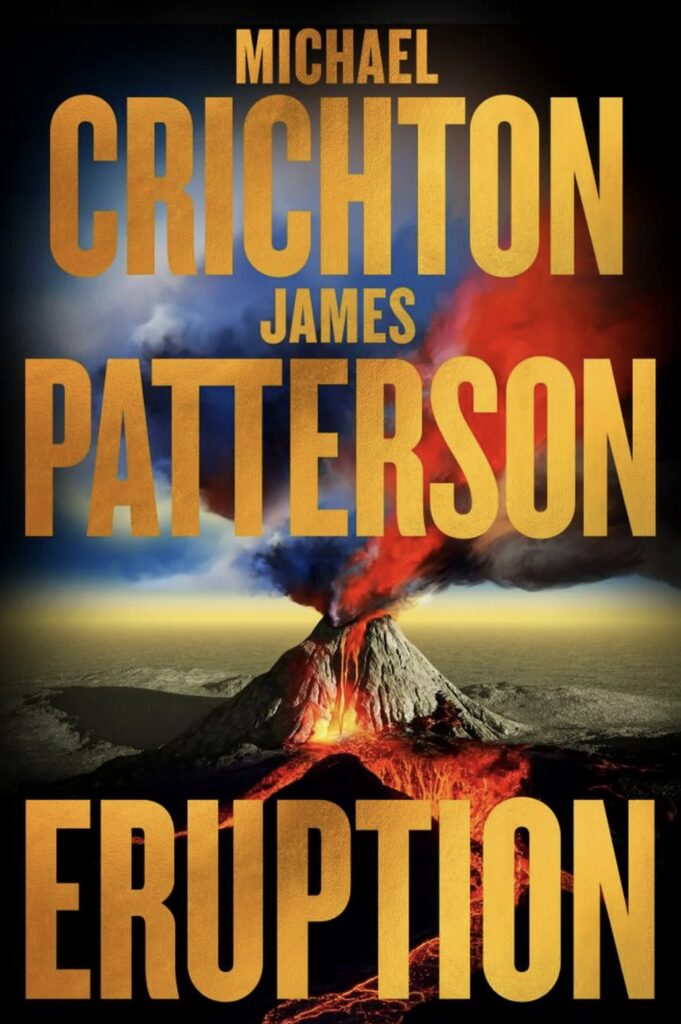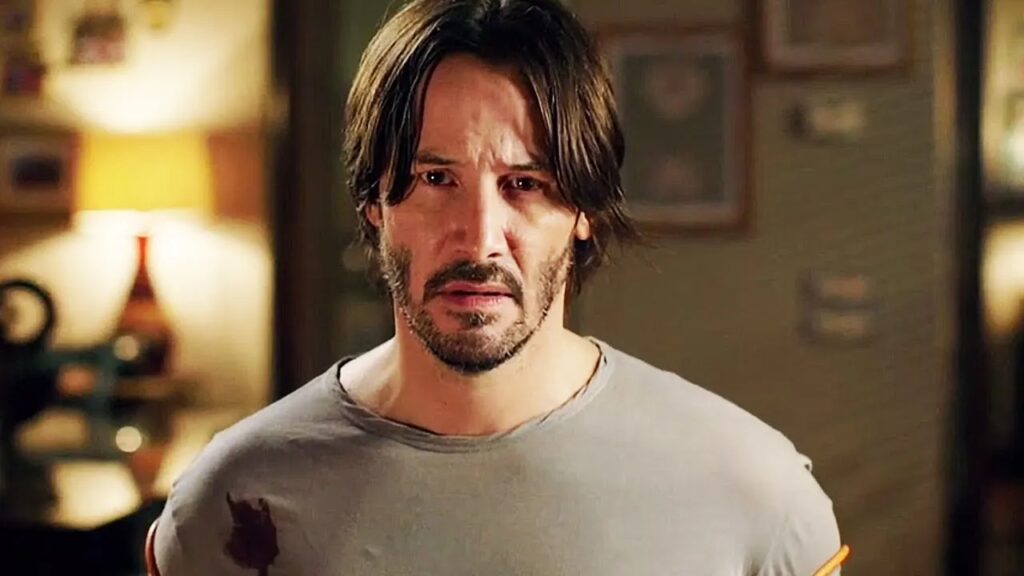Genre: Thriller
Premise: When a major volcano in Hawaii is slated to erupt within a week, the scientist responsible for managing the eruption learns that the US military has been hiding a secret on the outskirts of the island that threatens to turn the eruption into a world-ending event.
About: This is an interesting one. This was Michael Crichton’s (Jurassic Park) final book he was working on before he died. The unfinished novel, which is nearly 20 years old, made its way to super-seller James Patterson, who decided to finish it for him. The package recently went to auction this year and sold for 7 figures to Sony. The directors who will helm this film? None other than Jimmy Chin and Elizabeth Chai Vasarhelyi, who directed one of my favorite films from 2021, Free Solo. Keanu Reeves is loosely attached to the project but is expected to officially attach soon.
Writer: Michael Crichton and James Patterson
Details: 420 pages

Michael Crichton is responsible for the most high concept movie idea of all time: Jurassic Park.
When you hit it big in Hollywood, you have this moment. That moment becomes bigger than you. It becomes bigger than the industry. You are “THE PERSON” that everyone and everything orbits around.
That moment happened with Crichton after Jurassic Park and, for a good five years there, every one of his books was slotted to become a movie. For some writers, that’s more than they can handle. But for Crichton, he was ready for this moment. Every one of his books was a big idea that felt tailor-made to become a summer blockbuster.
But the problem with having that big breakout hit movie is that it’s hard to live up to. How many writers can write a hit movie and have two, three other stories that will do just as well? The answer is very few. But Crichton gave it his best shot.
Not many people know this but he co-wrote the novel for Twister. That’s two bona fide monster hits there. Reality then caught up with Crichton as his follow-up films, Congo, The 13th Warrior, and Timeline, fizzled.
But that takes nothing away from a master of the “big idea.” Let’s see if his final book, ironically, is the beginning of a comeback.
36 year old John “Mac” McGregor, is the director of the Hawaiian Volcano Observatory. He lives on the big island, in a town called Hilo, which has always been a tricky place to live since it’s right at the bottom of active volcano, Mauna Loa. There have been a couple of times in history where an eruption nearly destroyed the town.
When earthquakes start happening, it’s confirmed that Mauna Loa is going to blow, once again, in a week. Just as John starts preparing for that reality, he’s ushered away by the local military who bring him to a nearby cave.
It’s here that they reveal hundreds of containers of radioactive waste being stored. Mac is enraged that they would be this stupid but it gets oh so much worse. The containers are old enough that they’re starting to splinter. Even trying to pick them up will likely cause them to break.
Oh yeah, and this isn’t just normal radioactive waste. It’s been mixed with herbicide, which makes it insanely easy to spread. In layman’s terms, if these containers were to break, every human being on earth would be dead within four months.
Mac immediately gets to work on a plan to divert the lava as far away from those containers as possible. His plan is to build a wall along the side of the volcano to steer the lava. But then a douchey billionaire shows up with his own plan, creating all sorts of conflict regarding what to do next. They better figure it out soon because the hours are ticking away. Any time now, Mauna Loa is going to blow.

I can’t tell you how refreshing it is to read something other than one of these so-so-so-very-serious Black List scripts. Everything’s so SERRRRIOUUSSSSS on the Black List. So insanely SERRRRIOUSSSSSS.
I don’t know when movies that are made for entertainment got such a bad rap but imagine the alternative? All these SEERRRRIOUUUSSS movies. Who comes away from those feeling anything other than bummed out? We have enough bum-outy things going on in the world. Movies should be there to make us feel better!
Which is exactly what today’s movie – err… book – is about. I nearly said ‘movie’ because this novel is written like a movie. There are 108 chapters here. In other words, each chapter is insanely short. Crichton and Patterson did this so that each chapter would read like a scene.
In the spirit of the high-concept idea, Crichton makes a decision here that every high-concept writer faces the choice of making. Which is whether to add a “multiplier” or not. A “multiplier” is when you take a big idea and add a similar big idea that “multiplies” the scope of the concept.
To understand this, let’s note what this idea looks like without a multiplier. Without a multiplier, this is a BIG ERUPTION movie. You could’ve even made it a “super eruption” which I hear is something certain major volcanos are capable of which could end mankind. That would be a big idea. But there wouldn’t be a multiplier in it. The concept is told to you straight away.
Here, we get the multiplier of the nuclear waste containers. I didn’t go into it in the plot but, basically, the herbicide acts as a virus whereby if birds or insects come in contact with it, they can easily spread it to other places. Which is why the entire planet would be in danger.
But the multiplier here is those containers at the bottom of the island. That’s what elevates this idea into something that feels BIGGER. With high-concept ideas, that’s what you should be looking for. You should be looking for any elements that make your idea BIGGER.
With that said, there’s a way to use multipliers and there’s a way not to use them. If I wrote a movie about dinosaurs and then, at the end of the first act, I introduced aliens, sure, by the letter of the multiplier law, this would be a “multiplier.” But for multipliers to work, there has to be an elegant or clever connection between them, which there was here.
Hawaii is a major military base for the United States. It makes sense that they would secretly store nuclear waste out there. And, for those of you hemming and hawing about why in the world would the US place nuclear waste at the bottom of a volcano, Crichton actually spends a good portion of the story explaining it and it made perfect sense (it essentially comes down to the government trying to cover its ass by hiding this stuff away).
Another thing I liked about this book was that it created a world-ending event that had nothing to do with nuclear bombs. When you’re writing these REALLY BIG ideas, you get lazy, and you go with the lowest-hanging fruit (nuclear bombs!). Writers have been using them for decades now.
Push yourself!
Come up with something fresh and new, like Eruption did. I’ve never seen this particular combination of concepts before and it was really fun.
My only pushback on the novel is that these ideas tend to have a “worth the read” ceiling. They focus so much on the plot and the bells and whistles that the characters rarely resonate. If you’re going to write one of these, put some extra work into the characters because if you can elevate a high concept to a double-worth-the-read or even an impressive, it’s like discovering plutonium. It’s a rarity and it will make your script unstoppable.
[ ] What the hell did I just read?
[ ] wasn’t for me
[x] worth the read
[ ] impressive
[ ] genius
What I learned: One of my favorite phrases in screenplays is, “It’s better if I show you.” When the military picks up Mac to explain to him that this impending eruption is actually much worse than he realizes, he asks, “Why?” Their response: “It’s better if I show you.” From there, we get to see the actual containers. How fragile they are. A demonstration of what happens when an insect interacts with the herbicide. We SEE all this. That SEEING is our golden example of SHOW-DON’T-TELL and it’s so much more effective than a character just doling out exposition dialogue.

